#Box turtles
Text
Box turtles must look at other species of turtles and be like y’all are so unhinged
808 notes
·
View notes
Text

Virginia Wildlife. Vol. 27, No. 7. 1966. Cover by Ed Bierly.
Internet Archive
275 notes
·
View notes
Photo
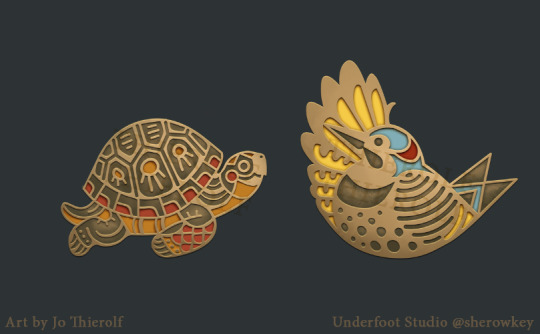
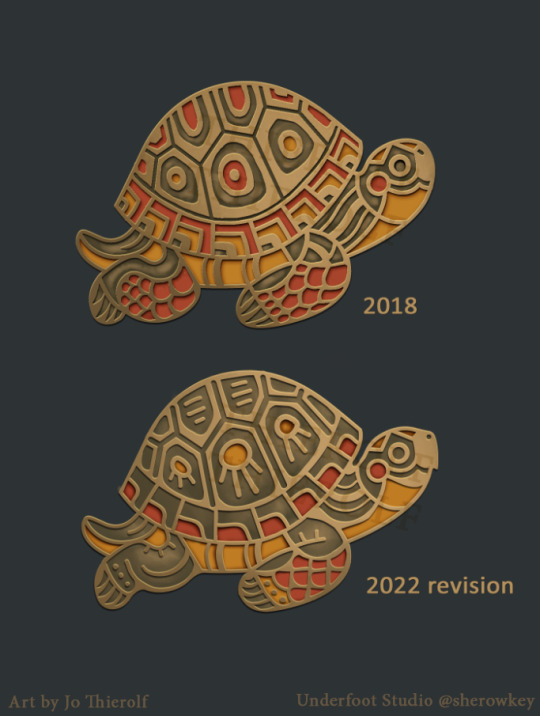

Box turtle and yellow-shafted flicker!
These pins weren't finalized due to manufacturing errors, but I'm very proud of the designs themselves and wanted to share before the year is up. 😄 Perhaps more interesting to me is the turtle's design revision (2nd image here). Something was bugging me about it all these years, so I narrowed it down and tried to make it read as a box turtle proper. The beak was such a simple change, but I think it fixed so much!
Bonus absolute napkin-quality concepts included since the image formatting on tumbles was driving me batty, lol
#design#pin design#enamel pins#sketch to final#turtle#turtles#flickers#woodpeckers#woodpecker#flicker#box turtle#box turtles
482 notes
·
View notes
Text

Did some doodles of Mikey if he had actual ornate boxes turtle markings because I was bored.
I have started commissions! Check out my Kofi for commissions and donations, thanks :)
#rottmnt#rise of the tmnt#rottmnt fanart#tmnt#fan art#tmnt fanart#digital art#rottmnt mikey art#rottmnt mikey#turtles#tmnt art#tmnt mikey art#box turtles#rough sketch#older work#rottmnt fandom#save rottmnt#unpause rottmnt#doodles#rottmnt doodles#rottmnt hc#rottmnt headcannons
240 notes
·
View notes
Text
The girls are brunching!!!!!!!!!!!!!!!!!!!!!!!!!!!!
10 notes
·
View notes
Text
Uncharismatic Facts of the Day
There’s no better way to spend winter than at the bottom of a frozen pond-- at least, not for red eared sliders. Like many cold-blooded animals, red eared slider turtles perform a form of hibernation called brumation, in which they enter an extremely deep sleep and their body functions slow dramatically. During this period, they occasionally surface for food or air, but are never fully active.

(Image: A red eared slider (Trachemys scripta elegans) grabbing a snack by David Byron Keener)
If you like what I do, consider leaving a tip or buying me a ko-fi!
#red eared slider#Testudines#Emydidae#pond slider#pond turtles#box turtles#reptiles#uncharismatic facts
67 notes
·
View notes
Text


Very important herpetological work at my university
4 notes
·
View notes
Text

#art#my artwork#traditional art#artists on tumblr#turtle#turtles#box turtles#eastern box turtle#animal skull#skull#flowers
11 notes
·
View notes
Text



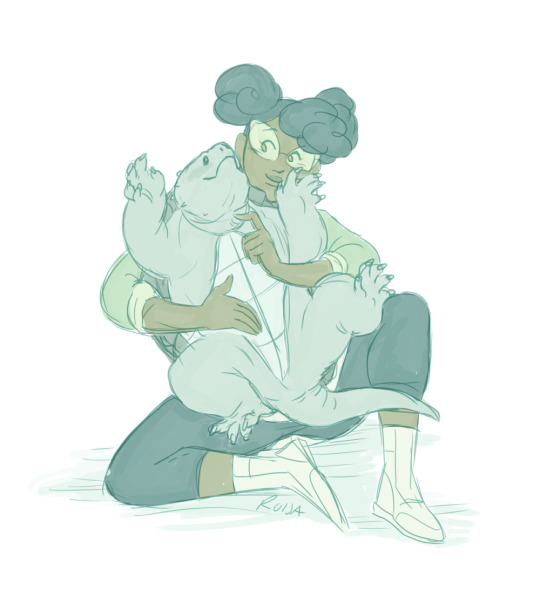
April encounters some strange turtles.
Everyday I think about how cute irl turtles are and yearn to hug them. I'm coping by drawing April doing it instead.
#tmnt#rottmnt#april o'neil#leonardo#raphael#michelangelo#donatello#turtles#alligator snapping turtle#red eared slider#spiny softshell turtle#eastern box turtle
11K notes
·
View notes
Text
Box Turtles (Eastern)
Tank:
Either indoor or out a water bowl with shallow water should be present at all times and changed daily or whenever dirty
They should never be fully submerged in water, but they should also have a water bowl and some humidity in their enclosure. Mist tanks at least once daily for adults, but multiple times daily for hatchlings since they dehydrate easily.
If keep mostly indoors take them outside as often as possible to help them absorb sunlight and strength their muscles
If kept outside made sure the walls are high enough, so the turtle cannot escape
Whether in or out made sure a hiding place is present for them whether that be substrate they can bury themselves in, a log, plants, a small pot/vase etc.
The measurements should be a minimum of 20 x 10 x 12 inches or a 10 gallon tank, but larger can be better if you have the room.
The substrate can be any type of mulch or dirt or coconut fiber or fir bark, but coconut fiber is preferred along with loose leaves on top or moss.
If indoors they need a heat lamp and an UV lamp to replicate the sun, but getting taken outside is recommended
You can have a small ball in their cage or other turtle safe toys as they may play with them sometimes
DO NOT house more than one male box turtle in the same tank since they can get territorial and fight each other. One male and many females or just many females in one tank can work however since females get along and aren’t territorial.
Diet/Feeding Habits:
They are omnivores and need a variety of things for their diet. Hatchlings need lots of protein and calcium when young, but need a variety of hard and soft foods as well for their beaks to grow correctly
Proteins: mealworms, earthworms, crickets, grasshoppers, raw beef (not too much fat however), beetles, slugs, cooked chicken, pillbugs, eggs, etc.
Calcium sources: crickets, fish, shrimp, kale, spring greens, etc.
Acceptable vegetables that should represent a high percentage of the box turtle’s diet include collard greens, beet greens, mustard greens, broccoli, turnip greens, alfalfa hay, bok choy, kale, parsley, Swiss chard, watercress, clover, red or green cabbage, savory, cilantro, kohlrabi, bell peppers, green beans, escarole, pumpkin and dandelion.
A lesser percentage of the diet can include cactus, various squash, sprouts, cooked sweet potato, parsnips, okra, cucumber, asparagus, mushrooms, carrots, peas, and corn.
Fruits to offer include apples, pears, bananas (with skin), mango, grapes, star fruit, raisins, peaches, tomato, guava, kiwis, and melons. Fruits that are particularly healthy include figs (which are high in calcium), apricots, dates, raspberries, and strawberries.
Age identification:
Count the rings on their shells to tell their age
They reach maturity around 5 years old
Gender Identification:
Look on the plastron (bottom side of the shell/their tummy) and see if it is concave(Slightly inwards) or flat. Flat is female, concave/inwards is male
Males have red eyes while females have brown or gold
Physical traits:
Full size around 5 years old, male and females both around the same size
They have gold and black coloration when healthy, but males have brighter colors than females and the shells can dull if not receiving enough sun
The males claws grow a lot faster than the females and tend to curl into the feet if not sanded down. In the wild their nails get sanded down by rocks, but in captivity you have to do this by hand and with a stone
Their necks are long when fully stretched out and they will stick out their necks when curious or when about to eat
They have scales where their legs are, but everywhere else is skin
They can grow up to 8-9 inches or a bit bigger than an adult’s hand
Personality:
When stressed or unhappy they will absolutely refuse to eat and can die from too much stress
Once they are calm and settled in they are fairly docile and curious
They like to explore and crawl around their environment, especially during the day
Some are okay with being held if they are tamed from a young age and/or are used to the person holding them. Some do not like to be held and will struggle to get away
Most of harmless and will never bite with their main defense mechanism to hide in their shell and close it up
Good escape artists if you do not keep an eye on them or don’t have a secure cage, they are great diggers and climbers
The younger they are the more frightened, but being gentle and patient helps get them calmed down and more used to their environment. They typically spend the first year or two of its life just eating and hiding
They also hibernate during the winter/like to bury themselves for most of the day, but in captivity they never go into full hibernation
They do not like to be handled frequently as it causes them stress, but they still can be handled and it can help them calm down over time
Their mating season is March-very early May and a male turtle may not eat during mating season if a female is near
Diseases/health concerns to look out for:
Hatchlings are very vulnerable to eye infections/upper respiratory infections and it’s marked by milky gunk around the eyes. This can be removed with a q-tip/cotton swab dipped in purified water.
Hatchlings are susceptible to parasites especially outside, so if do fecal exams if necessary
If their skin peels it means they are not getting enough hydration. This is easily fixed by fixing their humidity levels or placing them in shallow water more often to soak or drink more
They need sunlight or an UV light for their shells otherwise they lose color and vitamins they need to survive. If the shells lose colors that is a massive concern and can lead to shell rot (Deformed shell and bad odor)
They need lots of calcium/protein when young to help their shell form correctly and not have dents.
Overgrown beaks happen when young, but can be sanded down and can be prevented by feeding hatchlings a mix of hard and soft foods when young
Muscle weakness, but they can be built up when daily exercise like walking and climbing around a yard
Mating season can put extra stress on them and make them more susceptible to disease, so be careful of that
Special hatchling/egg care:
Once they hatch you need to immediately release them back into the wild otherwise it alters their instincts
They are carnivorous when young and need lots of proteins, but you can feed them fruits/vegetables and they might start eating them between 6-12 months old. Hand Feeding is also suggested to help them get used to you
Calcium+D3 should be supplemented in very small amounts once or twice a week. You can do this by dusting the live protein with it, mixing it in the mash, or dusting it on top of food.
They can get intimidated by larger food, so cutting up to about pea-sized pieces is suggested and feed them a variety of foods
Females will lay eggs whether or not she has mated, so you might find eggs but no hatchlings. She will typically lay 4-5 eggs, but possibly up to 11 and signs of infertile ones can be in water, above ground, or really shallow holes
Females tend to look for nesting sites around June or July and will bury them underground, usually next to a plant or rock with the spot being both sunny and humid
The nesting sites will take the female sometimes 8 hours to build and they will dig them with their hind legs and won’t face the hole
If you are incubating the eggs indoors, then just place them into the container under some substrate and DO NOT move them and make sure to mist the take every 2-3 days. Also give them a few days so they can develop harder shells before moving them
The eggs will hatch about 65-90 days later and like stated earlier, you have to release them instantly.
Make sure when incubating that the humidity stays as 80% and a substrate of moss or sand. This is the recommend incubators for eggs: https://amzn.to/34xQvPD
If using your own tank for incubation mist daily and keep a cup of water in there as well, always keeping the temperature around and never over 84 degrees Fahrenheit. Around 72 degrees will get all males and around 84-88 will be all females
Hatchlings can be kept in a 10 gallon tank with an incredibly shallow water bowl, a hiding place, and a heating lamp. Also should be misted lots.
The tank should be cleaned every few months, but most substrate can be reusable since most turtles use water as a potty
Plants should be offered at every meal, but they may not eat it every time and don’t stop offering either
#dsp care sheet#dsp care sheets#eastern box turtle#box turtles#herpetology#herpetologist#research#animal#animals#animal care sheet#my care sheets
0 notes
Text




#made this a year ago#was too embarassed to share it#now i don’t care#pipe bomb#ask box#my art#rottmnt#fanart#timothy#rottmnt timothy#donatello#rise of the teenage mutant ninja turtles#rottmnt donnie#timatello#unpause rottmnt#Spotify
3K notes
·
View notes
Text
Welcome to the family, Warlock! This handsome devil is a gulf coast box turtle that I adopted from Central Mississippi Turtle Rescue a few weeks ago. He’s been settling in beautifully and I have been having so much fun getting to know him.
Warlock came from an animal hoarding situation with very poor husbandry and as a result he suffers from a significant shell deformity. He can never be released into the wild, so I will endeavor to give him the very best life in captivity. He now lives in a large outdoor enclosure with plant life, different terrains to explore, and a small pond for soaking/relaxing. I truly hope to have him with me for a long time.
I have been hoping to adopt a boxie for quite some time and I am so thankful to this amazing rescue for their dedication to every single turtle in their care. The rescue is going through a temporary closure due to the founder’s health struggles, so if you are interested in any turtle apparel or merch their store is a great place to look and a wonderful cause to support. More than half of all turtle species are threatened or endangered; we desperately need organizations like this to tackle chelonian conservation on the frontlines. If you’re a turtle fan, definitely take a look!
https://www.teepublic.com/stores/cmtr-store?ref_id=6536
and please note this post will serve as your formal warning of many boring turtle videos to come in the future. The way he eats just delights me
247 notes
·
View notes
Text

The Quizzer Book of Knowledge: Nature. Written and edited by George Beal. 1978.
Internet Archive
171 notes
·
View notes
Text
HELP
My sister's box turtles just came out of hibernation, but her male box turtle apparently has mouth rot. We think it is because of the fact that he refuses to eat most foods that has the vitamins they need, but we aren't sure. He has white on his beak/cheeks and we are worried about how severe it might be
We are taking him to the vet soon, but we don't know what to do. Please any ideas!
#Box turtles#Mouth rot#Turtles#please help#he refuses to eat the supplements#theses turtles are her life
0 notes
Text

Using my fic (Dry Scales) to spread the word about how goofy ornate box turtles look when they swim. Go find a video on it, you’re missing out if you don’t know.
#rottmnt#rise of the tmnt#tmnt#rottmnt fanart#save rottmnt#rottmnt meme#rottmnt mikey#rottmnt leo#rottmnt raph#rottmnt donnie#rottmnt fanfiction#rottmnt fanfic#box turtles#turtles swimming#guys go watch a box turtle swim#they suck#don’t tell Mikey that though#fanfic#ao3 fanfic#fanfiction#tmnt fanfiction#fanfiction snippet#tmnt fanfic#unpause rottmnt
172 notes
·
View notes
Text
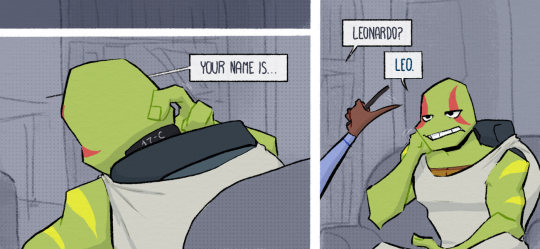


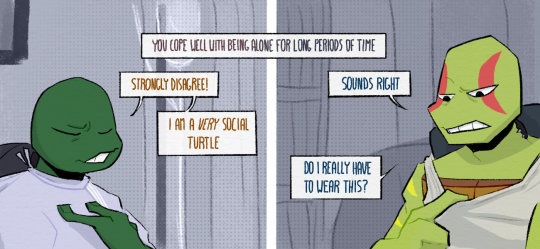
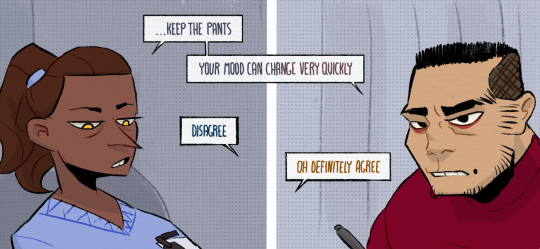





Part 15 of Arc II (Part 41)
these boys be lyin' lmao
⇇ | ⇽ | index | ⇾
#rottmnt#rottmnt leonardo#rottmnt michelangelo#rottmnt residuum comic#residuum#c#g#box turtles actually aren't a social species adknvjsan but sliders sure are#i WoNDer if this will be relevant later lmao#but mikey IS 16 nad leo 17#do with that what you will
1K notes
·
View notes